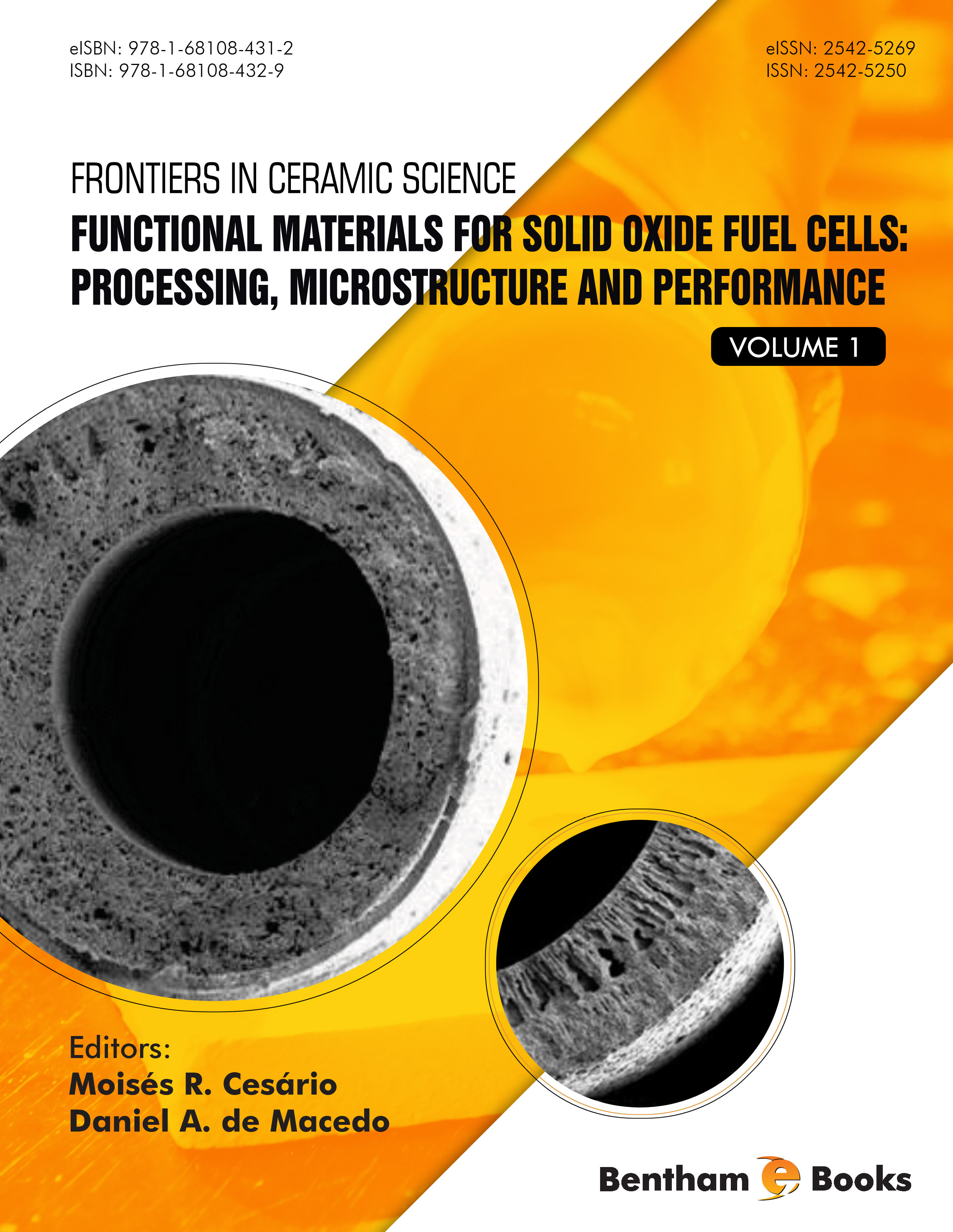Solid Oxide Fuel Cells (SOFCs) are identified as a major technological promise for clean energy production. The development of functional materials for SOFC operating at intermediate temperatures (550 – 750 °C) requests not only a strict control of synthesis and processing conditions of ceramic/composite powders, but also a good understanding about the correlation between microstructure and electrochemical properties.
This e-Book aims to cluster contributions from the most productive and well-recognized researchers studying SOFC functional materials. Emphasis is on novel chemical/physical/mechanical processing routes towards the attainment of electrolyte and electrodes powdered/layered materials. Furthermore, the potential of the resulting microstructures toward SOFC applications has been checked using a combination of electron microscopy and electrical/electrochemical characterization techniques using symmetrical and/or single fuel cell configurations.
The book begins with an introductory chapter addressing the working principle of a SOFC and basic characteristics of SOFC electrodes. The second chapter is dedicated to cathode materials applied to intermediate and low-temperature SOFCs. The author proposes a comprehensive discussion on the cathode development, emphasizing its reaction mechanism, microstructural, characterization, and electrical performance. Studies of long-term chemical and mechanical stability have also been discussed.
The third chapter describes a review on anode materials, with focus on materials composition, synthesis methods, and electrical properties.
The forth chapter reports on the study of lanthanum silicate apatite based materials, drawing attention to their properties as electrolytes for SOFC. The authors propose a discussion on different synthetic methods to obtain apatite type electrolytes.
The fifth chapter presents a brief review on chemical/physical routes to prepare electrolyte and electrode materials for SOFC.
The sixth chapter reports on a recently phase inversion technique that is used to fabricate micro tubular solid oxide fuel cells (MT-SOFC). The authors propose a discussion on the development of this important manufacturing technique and their effects on the fuel cell performance.
The seventh chapter also discusses the use of the phase inversion based extrusion technique to fabricate MT-SOFC. Emphasis is given on the fabrication of electrolyte and how the fabrication parameters could affect the structure of the obtained electrolyte layer.
The eighth chapter reports on the study of proton conducting ceramic oxides with perovskite structure. The authors propose the development of electrolyte and electrode materials with combined properties of proton conductivity, high sinterability (in case of electrolytes), and chemical stability which make quite innovative research.
We would like to express our gratitude to all the eminent contributors for their excellent contributions and we believe that this e-book will be a reference to academic/industrial scientists from chemistry, physics, and materials science interested in the processing-microstructure-performance of SOFC materials.
Dr. Moisés Rómolos Cesário
Unit of Environmental Chemistry and Interactions on Living - EA 4492
University of the Littoral Opal Coast (ULCO)
France
&
Dr. Daniel Araújo de Macedo
Department of Materials Engineering
Federal University of Paraíba
Brazil

